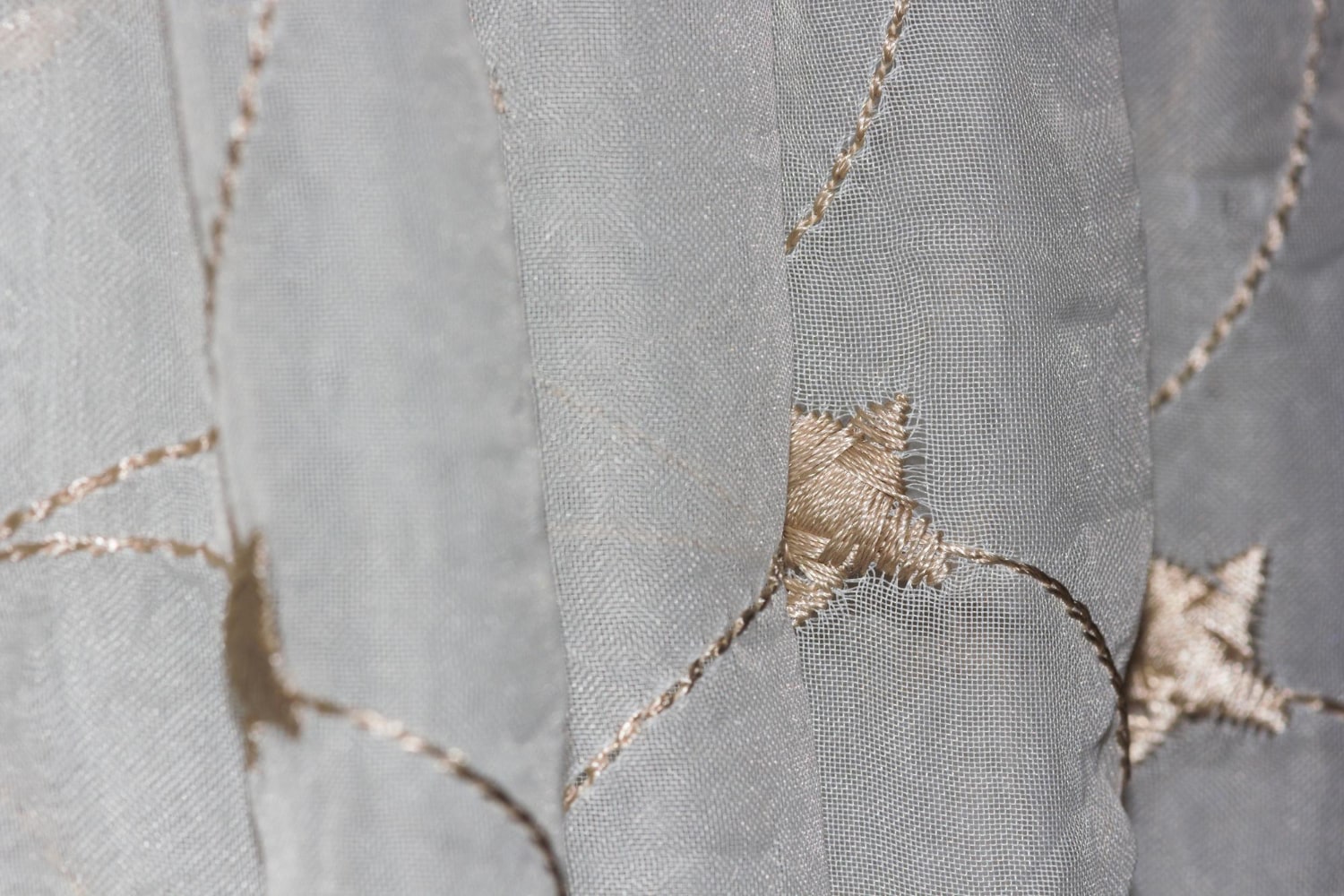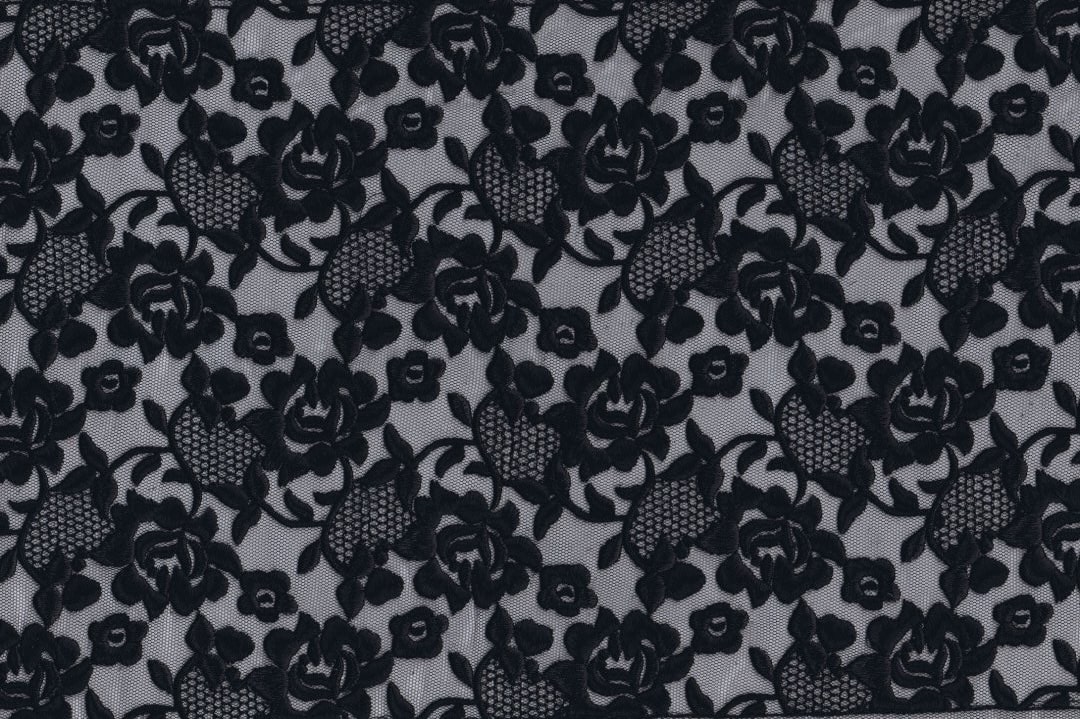The timeless appeal of embroidered tulle
Embroidered tulle represents one of the most sophisticated expressions of haute couture tailoring, capable of combining the delicacy of an impalpable fabric with the finest decorative art. Used for evening gowns, bridal veils, couture tops and ornamental details, tulle enriched with handcrafted embroidery is a symbol of timeless elegance, capable of transforming a garment into a true work of art.
The origin of lightness: the nature of tulle
Tulle is a fine mesh fabric, often made of silk, cotton, nylon or polyester. Its openwork structure makes it transparent and light, perfect for playful overlays and ethereal volumes. Its impalpable nature makes it an ideal canvas on which to apply decorative work, allowing embroidery to stand out in a three-dimensional and airy way.
Tulle embroidery: a balance between technique and creativity
Embroidery on tulle requires specific technical expertise: the transparency of the fabric does not allow for errors, and each stitch must be precisely calibrated. In this context, techniques of high craftsmanship value are included, such as French stitch embroidery, which with its small raised swirls gives a precious and slightly textural effect to the tulle surface.
The challenge lies in harmonizing materials and choosing yarns, beads or sequins that enhance the design without weighing down the fabric. This ability to “embroider the air” is what distinguishes the most sought-after haute couture work.

Embroidered tulle in haute couture: elegance in motion
In haute couture collections, embroidered tulle is used to create dynamic visual effects. The embroideries seem to float on the body, following its lines in a light but defined way. An emblematic example is transparent corsets with floral or abstract patterns that appear to be painted on the skin.
Often, designers juxtapose tulle with other contrasting materials, such as leather or denim, for a contemporary effect. In this dialogue between opposites, embroidered tulle serves as a bridge between the tradition of hand-decoration and bolder trends in fashion design.
Complex workings: between tradition and experimentation
Workings on tulle lend themselves to surprising combinations. One of the most fascinating techniques is lace-effect embroidery, which combines the transparency of tulle with the sophistication of lace, simulating ancient textures through modern motifs. The result is a fabric that speaks of past and future together, perfect for ceremonial gowns or red carpet creations.

Versatility and customization in production
One of the great qualities of embroidered tulle is its versatility. It can be used to create entire garments, decorative panels, sheer inserts or focal details. It also offers endless possibilities for customization, making it ideal for one-of-a-kind pieces, capsule collections, or bespoke bridal collections.
The choice of pattern, thread color, embroidery density, and possible appliqués can radically transform the final look of the garment, resulting in creations that reflect the brand's stylistic vision and the needs of the client.
Conclusion
Embroidered tulle continues to be a favorite material for fashion designers who wish to blend lightness and decoration into a harmonious synthesis. Thanks to its ability to accommodate traditional techniques and innovative experimentation, it remains a key element in the construction of clothes that do not go unnoticed. In a world where tailoring excellence makes all the difference, the embroidered delicacy of tulle best embodies the value of detail.